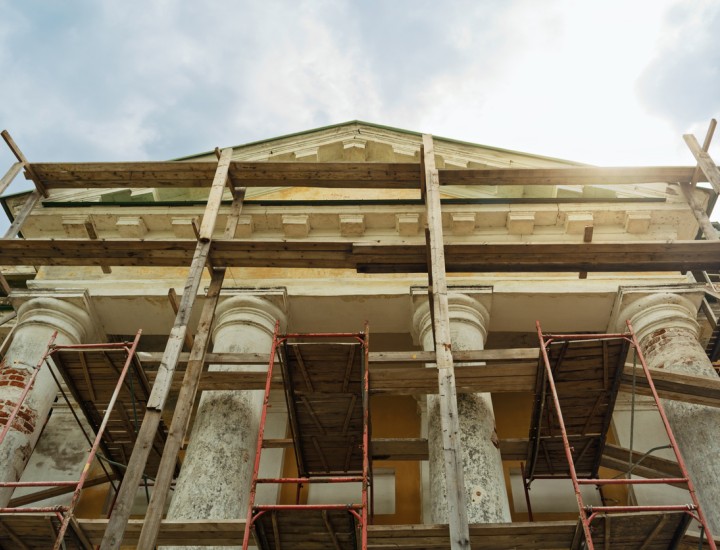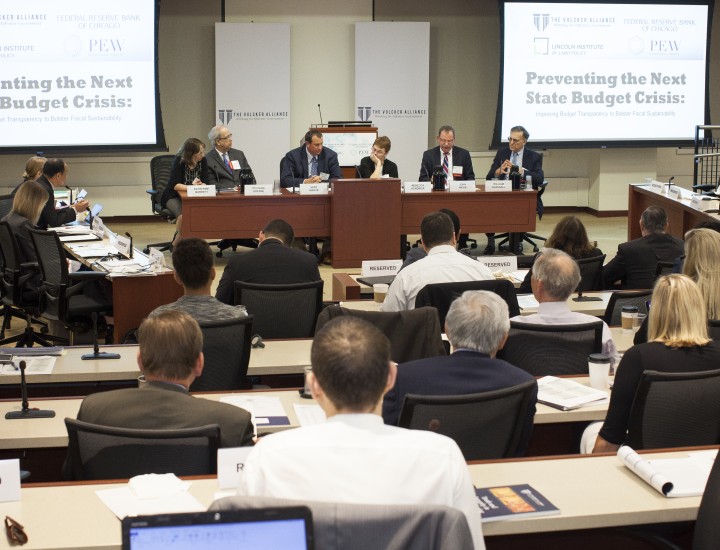New York City's Reliance on State and Federal Funds Puts City Finances at Risk
New Volcker Alliance Report Details How New York City Should Prepare to Withstand Future Cuts in Federal, State Aid
New York, NY – More than one-third of New York City’s annual operating budget comes from grants and revenues that originate from New York State or the federal government—a far greater amount than other large metro areas. Whether it’s the recently enacted $229 billion state budget that will send billions to New York City – for schools, housing, Medicaid or more – or combined state and federal aid to provide a lifeline to subways and address the city’s ongoing migrant crisis, America’s biggest municipality is deeply affected by aid from Albany and Washington.
Reduction or elimination of these funds would force expansive cuts to critical public services, according to Revenue at Risk: Long-Term Strategies to Bolster NYC’s Budget Against Potential Cuts in US and State Aid, an Issue Paper released today by the Volcker Alliance. The paper, authored by Thad Calabrese, Associate Professor of Public and Nonprofit Financial Management and Director of Finance Specialization at the New York University Robert F. Wagner Graduate School of Public Service, recommends that the city use the current opportunity presented by federal COVID-19 relief money to strengthen the structural integrity of its budget and prepare now to withstand potential risks to state and federal revenue sources down the road.
“As we saw in the recent budget negotiations, New York City is in a unique and challenging position because it depends upon state and federal funds for its operating expenses to a larger degree than the next ten biggest cities in the country,” said William Glasgall, Senior Director, Public Finance, at the Volcker Alliance. “The City has an opportunity now to prepare its budget for a potential change in intergovernmental funds, which could imperil public services from education to Medicaid. It is critical that New York City prepare for future economic downturns, pandemics, and other events that may affect the city’s revenue and fiscal health for years to come.”
The paper provides a four-point plan to cut the risks of reliance on intergovernmental revenue and strengthen the long-term sustainability of the budget, recommending that New York City officials:
- Maintain long-term structural fiscal balance via a combination of expenditure controls, revenue increases, and budgetary savings to be used in hard times.
- Increase the size of the recently created rainy day fund, known as the Revenue Stabilization Fund. Doing so will help avoid budget maneuvers that precipitated the city’s near-bankruptcy in 1975.
- Prioritize making rainy day fund deposits to eliminate less desirable fiscal practices to amass budgetary savings.
- Adopt strict rules for rainy day fund withdrawals and deposits along the lines of best practices recommended by the Volcker Alliance.
This paper builds on the Volcker Alliance’s previous work examining state and local budgets across the US and provides recommendations for long-term fiscal sustainability.
###
Media Inquiries, please contact: Vig Tharmarajah | [email protected] | 917-485-1410


